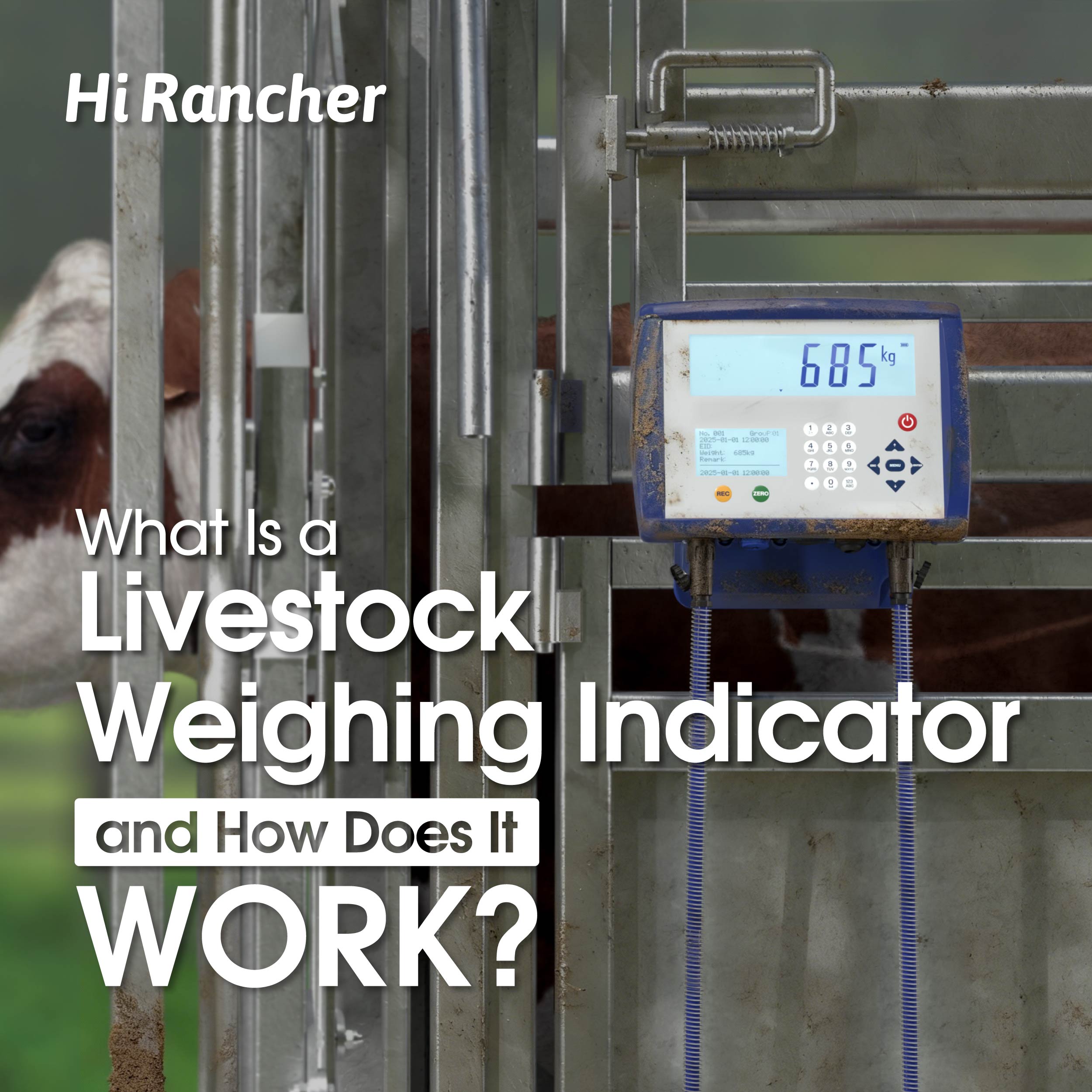What Is a Livestock Weighing Indicator and How Does It Work?
Accurate animal weight data is essential for every modern farm — from managing daily feeding decisions to tracking growth, diagnosing health issues, and preparing animals for sale. At the center of every livestock weighing system is a device called the livestock weighing indicator.
But what exactly does it do, and how does it work on your farm?
This guide breaks it down in simple, practical terms.
1. What Is a Livestock Weighing Indicator?
A livestock weighing indicator is the control unit that receives signals from load bars or load cells and converts them into a stable, easy-to-read weight value.
It functions as the “brain” of the weighing system and plays a key role in:
- stabilizing the weight reading
- filtering out animal movement
- displaying real-time weights
- storing or transmitting data
- connecting with EID readers or farm management software
Whether you’re weighing cattle, sheep, goats, or pigs, the indicator determines how fast, accurate, and reliable your weighing process will be.
2. Why Farmers Need a Livestock Weighing Indicator
Livestock don’t stand still, especially inside a chute or on an outdoor platform. A quality indicator ensures the weight is accurate — even when the animal is shifting or kicking.
Farmers typically rely on a weighing indicator for:
- Growth monitoring (checking daily or weekly gains)
- Feed efficiency decisions
- Medication dosing
- Breeding and body condition assessment
- Sale weight confirmation
- Health and treatment records
Using a livestock weighing indicator ensures all weight-related decisions are based on real data, not estimations.
3. How Does a Livestock Weighing Indicator Work?
The working process is straightforward, but highly engineered:
Step 1 — Load bars detect force
When an animal stands on the platform or inside the chute, the barras de carga measure the downward force.
Step 2 — The force is converted into electrical signals
Each load bar contains load cells that generate a tiny electrical signal proportional to the weight.
Step 3 — The indicator receives and filters the data
The indicator stabilizes the signal using:
- motion compensation
- digital filtering
- zero tracking
- vibration and shock filtering
This is crucial because animals rarely stand still.
Step 4 — The indicator displays a stable number
After processing the data, the indicator shows a stable reading — even if the animal is moving.
Step 5 — Optional data storage or transmission
Modern indicators can also:
- store weight records
- send data to mobile apps
- export CSV files
- pair with EID readers
- sync to farm management platforms
This makes the weighing system part of a complete livestock monitoring workflow.
4. Key Features to Look for in a Livestock Weighing Indicator
Not all indicators are built the same. Farmers typically look for:
✔Fast stabilization
Reduces re-weighing time and increases handling efficiency.
✔ Outdoor durability
Rugged housing, waterproof design, and UV-resistant buttons are essential in harsh farm conditions.
✔ Large, clear display
Farmers often weigh animals outdoors in bright light — visibility matters.
✔ Compatibility with load bars
Plug-and-play installation saves hours of setup time.
✔ EID capability (optional)
For farms using electronic ID tags, choosing a livestock weighing indicator with EID integration significantly improves record accuracy.
✔ Data export options
USB, Bluetooth, or app connectivity helps streamline record-keeping and herd management.
5. Common Applications of Livestock Weighing Indicators
These indicators are used across a wide range of farm operations, including:
- cattle chutes and alleyway scales
- feedlot platforms
- sheep or goat portable scales
- pig alleyway weighing systems
- mobile trailer weighing setups
- dairy herd performance monitoring
- veterinary treatment weighing
- auction pre-sale weight checks
No matter the species or setup, the indicator ensures weight readings are accurate and repeatable.
6. Benefits for Farmers and Ranchers
A reliable livestock weighing indicator helps farms achieve:
➜ Higher productivity
Faster weighing reduces stress for both animals and handlers.
➜ Better health decisions
Accurate weights ensure correct dosing and timely intervention.
➜ Increased profitability
Knowing exact sale weights prevents losses at the scale.
➜ Improved traceability
EID-compatible indicators record animal-by-animal data for compliance.
➜ Long-term system stability
Quality indicators withstand rain, freezing conditions, and heavy on-farm use.
7. Choosing the Right Indicator for Your Operation
When selecting a livestock weighing indicator, consider:
- how many animals you weigh per day
- whether you need EID capability
- your environment (indoor / outdoor / dusty / muddy)
- the type of load bars or platform you use
- your herd management software
- power supply requirements (battery / AC / rechargeable)
For example:
- FOX Series → Everyday farm use, simple and reliable
- FOX PRO → livestock scale indicator with EID + advanced data functions
- K7 → Budget-friendly option for basic weighing
Choosing the right model ensures a faster workflow and more accurate records.
Conclusão
A livestock weighing indicator is one of the most valuable tools in modern animal management. It converts raw load bar signals into accurate, stable weights, helping farmers make smarter decisions about feeding, treatment, and sale timing.
A good indicator isn’t just a display — it’s a complete weighing controller designed to work reliably in harsh farm conditions.
Want to Improve Your Farm Weighing System?
HiRancher provides durable, field-proven indicators designed specifically for livestock operations.
Whether you need basic weighing or full EID data integration, we can help you choose the right system.
👉 Explore our livestock weighing indicators
👉 Request a compatibility check with your current load bars
👉 Ask for a free technical recommendation



